Whill Model F wheelchair, in the field
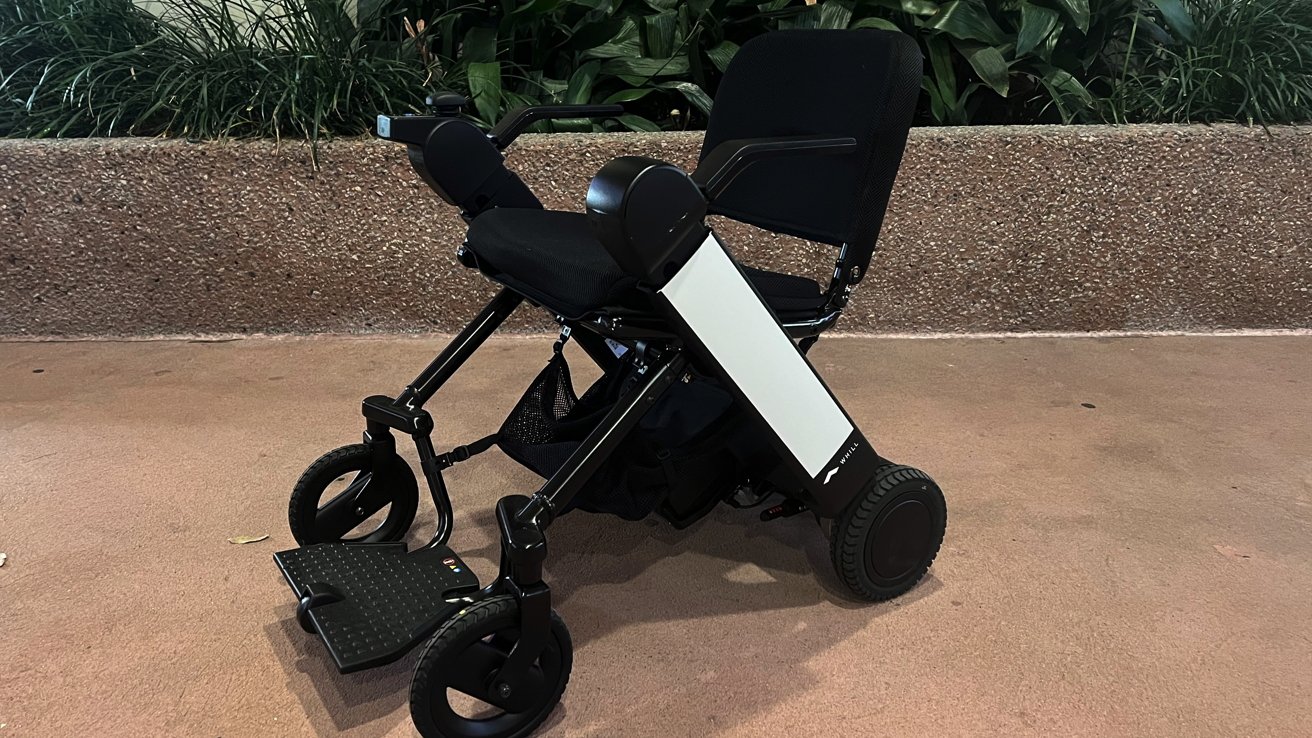
AppleInsider may earn an affiliate commission on purchases made through links on our site.
We've driven the Whill's Model F power wheelchair nearly daily, over six months. We can say, without a single doubt, that it is the wheelchair that Apple would make, if it was in the market to do so.
I am not the one who needs this chair, so a little bit of a preamble is in order. Our test-driver had a stroke in 2015, resulting in a left-side vision cut, general left-side weakness and lack of control, plus hampered mobility. She isn't profoundly cognitively impaired, and can still walk short distances without more assistance than use of a cane or hemi walker.
We've been through a wide array of wheelchairs, push and power. Most affordable powered mobility assistance devices are heavy, ugly, impractical without a ramp-van, or some combination of all three.
Almost two years ago, I saw Apple's Meg Frost present in a powered wheelchair from Whill, albeit the more indoors-oriented one than the Whill Model F. Curious, I reached out to the company in early 2022, and they loaned us one to try.
Back in July, we said that it had changed everything we had previously had to deal with as it pertains to mobility aids. Six months after unboxing it, we've fully absorbed it into our lives, and I am happy to say that the Whill Model F chair is everything we hoped it would be — and a little more.
It's not 100% perfect. It's close, though.
Whill Model F - Specifications
| Specifications | Whiil Model F |
|---|---|
| Starting Price | $2999 |
| Width (inches) | 21.8 to 23.8 wide |
| Length (inches) | 36.8 in use, 18.3 folded |
| Weight (pounds) | 58.8 |
| Capacity (pounds) | 253.5 |
| Seat Size (inches) | 18 |
| Armrest Spacing (inches) | 16, 18 |
| Turning Radius (inches) | 30.7 |
| Driving Range | Up to 20km (12.4mi) |
| Top Speed | 6km/h (3.7mph) |
| Battery | 25.3V 10Ah Lithium Ion |
| Charging Time | 5 hours |
| Dust/Water Resistance | IPX4 |
Whill Model F - Construction And transportation
We've gone over this once before, but in case this is the first time you've found our coverage on the Whill Model F, it's worth revisiting. The Whill Model F is a compact and highly mobile powered chair, built specifically with auto travel in mind. Weighing less than 60 pounds, and folding very flat, it is easy to transport, and importantly, easy to hump out of the back of a car or van.
It's designed around a large cylindrical drum that houses the motors between the back wheels, with arms that raise to a seat and connect to a lighter front section. As the chair folds up as the front wheels fold closer to the main body, it becomes a much smaller chair that can more easily fit into a trunk.
We have a minivan, as we have children. This is an easy toss into the back, even with all their accoutrements, on trips long or short.
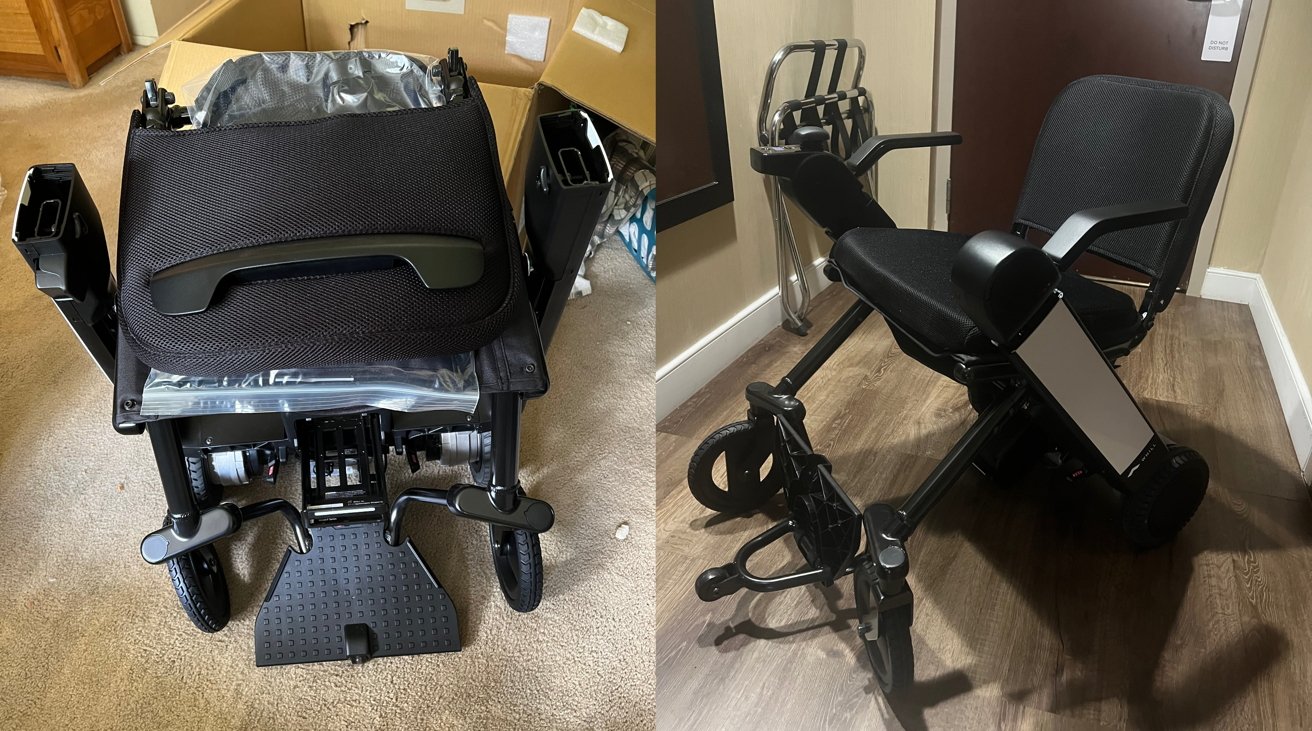
Measuring up to 23.8 inches at its widest and up to 36.8 inches in length, it is a relatively compact powered chair compared to competitors. The length shrinks down to half the size when folded, at 18.3 inches.
The folding action does increase the height of the chair, but not by that much. It moves from 31.5 inches deployed to 33.6 inches when folded, making it overall a very compact stored chair. Beyond a small quadrant of the back of our van, it fits well into the trunk of small rental cars, too.
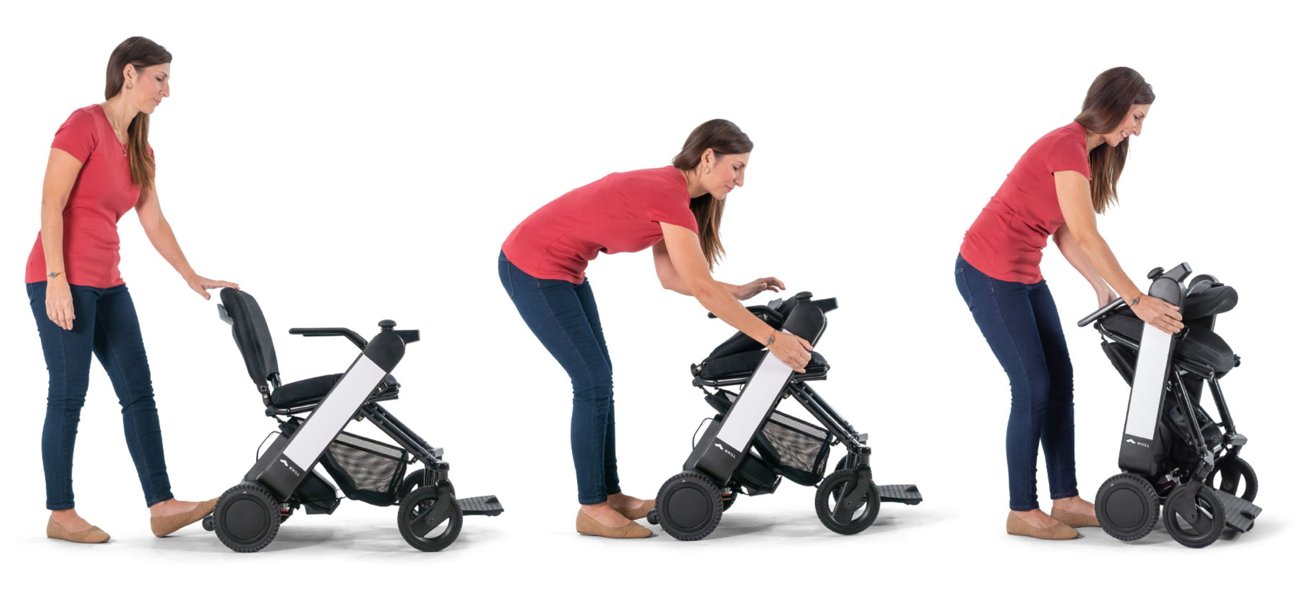
Without accessories, it weighs 58.8 pounds, including the lithium-ion battery, which comes in at 5.9 pounds alone.
This weight and size are where it changed everything when we first looked at it. Vans with ramps cost about three times what a new minivan costs for no other reason than they can charge that much. So, in a van without a ramp, the caretaker needs to move the chair in and out of the trunk or rear hatch of the vehicle.
So, when you want or need to go someplace, instead of the logistical discussion centering on the kids, it focuses on that. And, I am not a young man anymore — a 20-pound difference versus competitors, and almost 26 pounds difference with the battery removed, means a lot in this context.
Because of its light weight compared to other chairs, it's easy to lug along a second battery in a backpack or an under-chair cargo sling. The budget may be the limiting factor at about $550 per first-party battery.
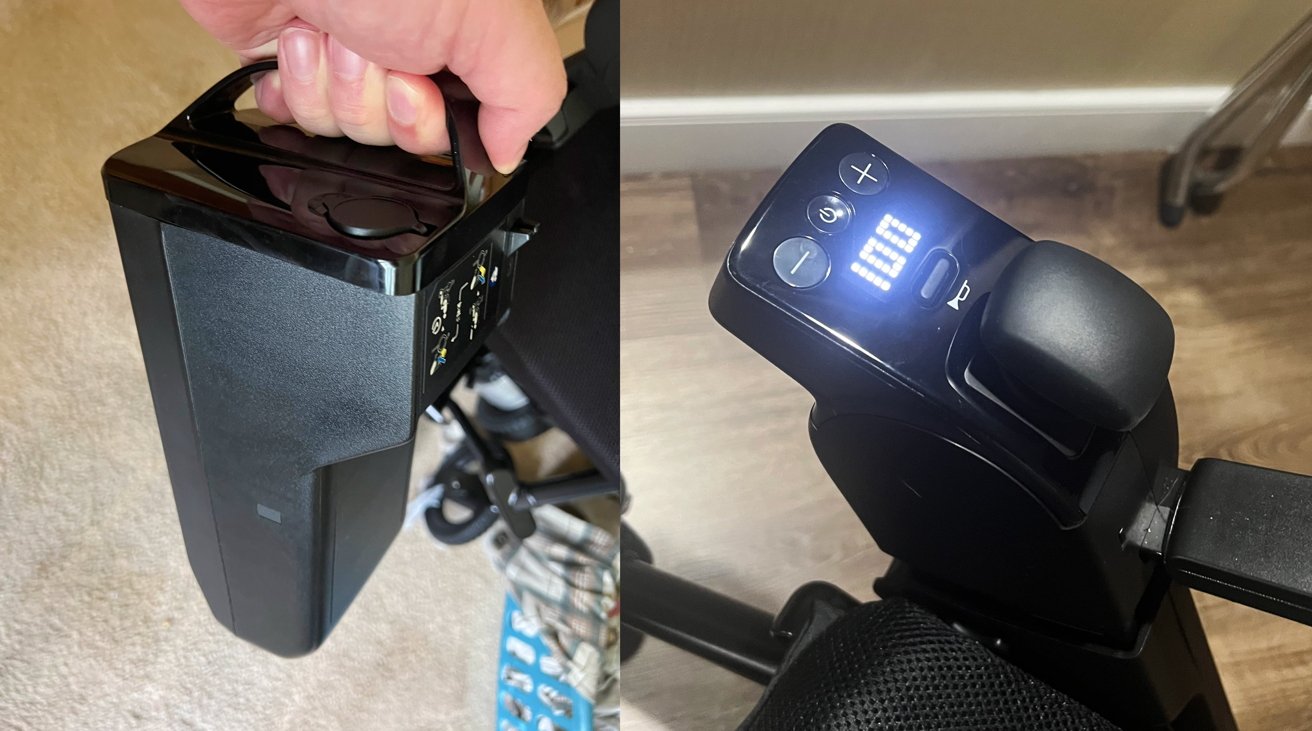
We chose the battery bank option. More on that in a few paragraphs, though.
The joystick controller can be left- or right-mounted. This is something that's best done once, and left as-is.
For those who need to go cross-country, Whill also made sure it was air travel approved. To meet regulations, you remove the battery before handing over the chair to be placed in the hold, and then take the battery into the cabin — which is not ideal, given how airlines generally handle mobility equipment, but it is necessary.
Fortunately, other than the miles in the car, we've traveled with it on long-distance trains the most. Depending on the train, it can either drive straight down the center, along the side on sleeper trains, or folded and stowed in one of the luggage voids in long-distance cars.
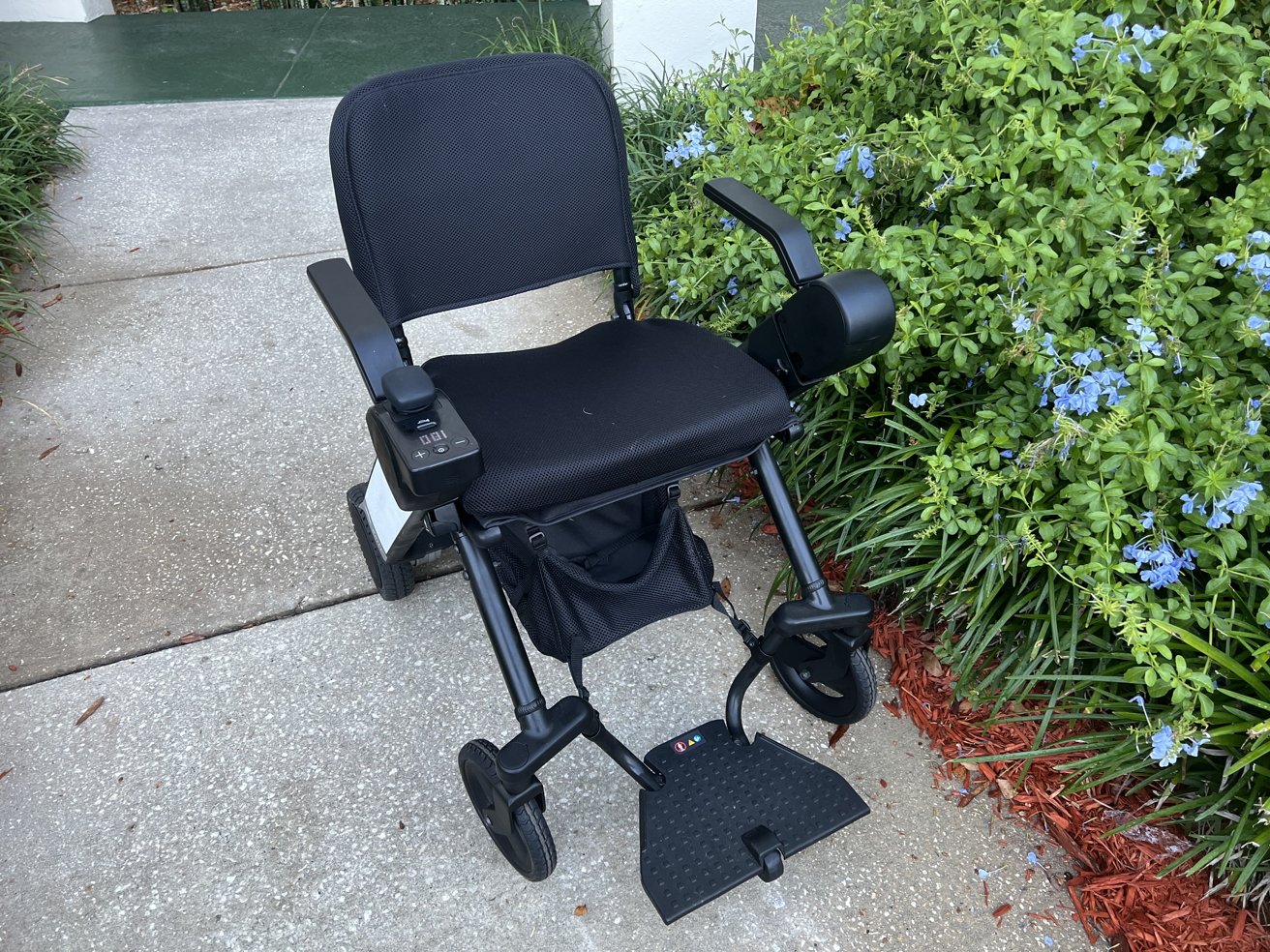
Wheelchairs, by definition, need to be sturdy. And, as such, they tend to be metal, angular, and unattractive. The Whill Model F defies that with a style of its own.
There aren't a slew of visible wires snaking everywhere, nor is it an edifice of steel like some are. Instead, the chair itself has clean lines, with side-panels for color customization.
The Model F's side panels are available in a choice of five colors, including black, white, light green, light blue, and red.
Moving around in the Whill Model F
The Whill Model F has a weight limit of 253.5 pounds for the passenger and cargo. It has an 18-inch seat width, with the space between the arms able to go between 16 inches and 18 inches, to keep the user as comfortable as possible.
The cushion itself is a firm memory foam, better than every other wheelchair we've tried. Still, for longer runs, we still recommend some kind of additional cushion, like a Purple pad or the like, but it will do for shorter trips as-is.
The arms are adjustable up and down, also for comfort. This is not push-button like folding the chair is, but that's fine. Once you set it up for the user once, it won't have to be adjusted much, if at all.
In theory, the non-controller arms can moved for transfer, but it isn't ideal. With the non-controller arm removed, there's a open metal rectangle across the transfer surface where the arm insert goes. If this is a problem, we recommend talking to your physical therapist for advice on it or how to deal with that gap.
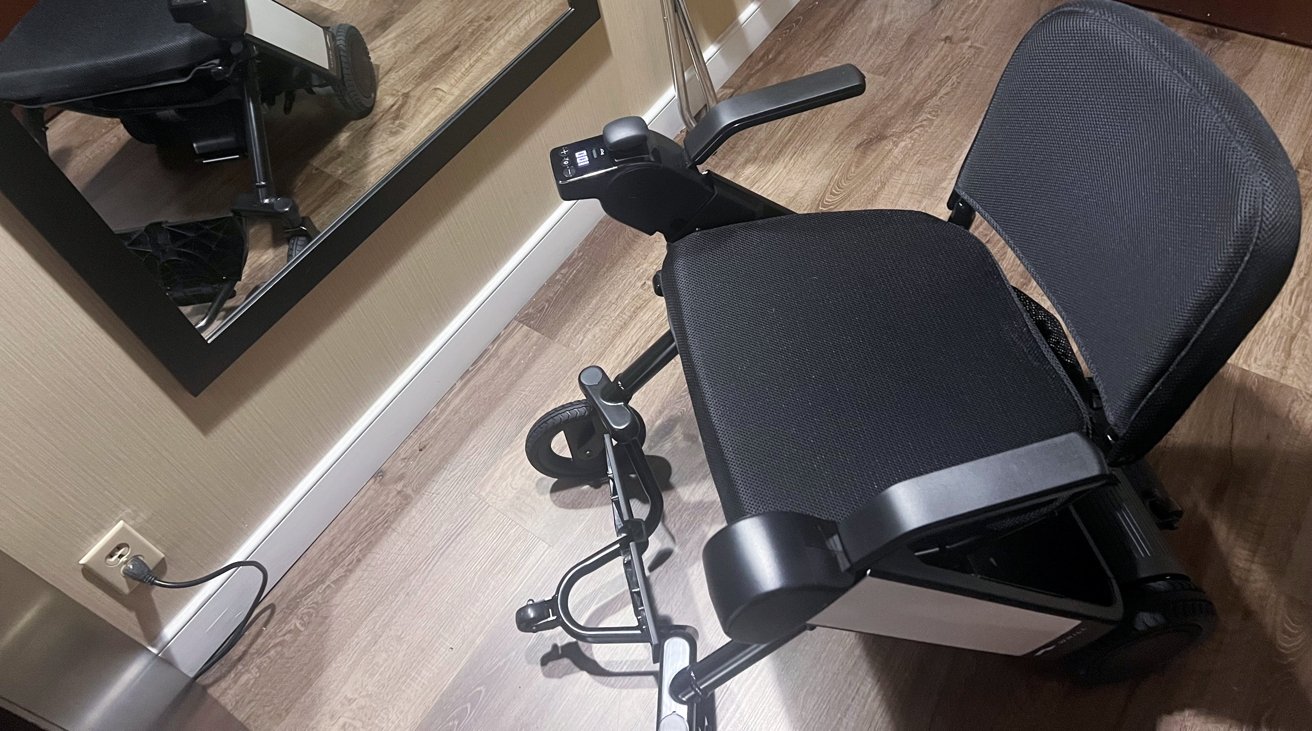
With a top speed of 4 miles per hour, it's not slow, but isn't going to win any speed trials. It's also got a good range of up to 12.4 miles under ideal conditions, according to Whill.
We've tested the battery to dead a few times, and the 12.4 miles is optimistic, but not by a lot. We routinely exceeded 10.5 miles on a single charge in the heat of the summer, and in sub-freezing temperatures, we got up to about 9.8 miles per charge, with the chair laden to about 235 pounds of human and gear stored underneath in both weather conditions.
There is a battery percentage on the chair's controller and on the app, and an estimate of how much longer you can drive the chair, and we found it to be pretty accurate. There isn't any long-term battery health indicator on the app, like there is on the iPhone.
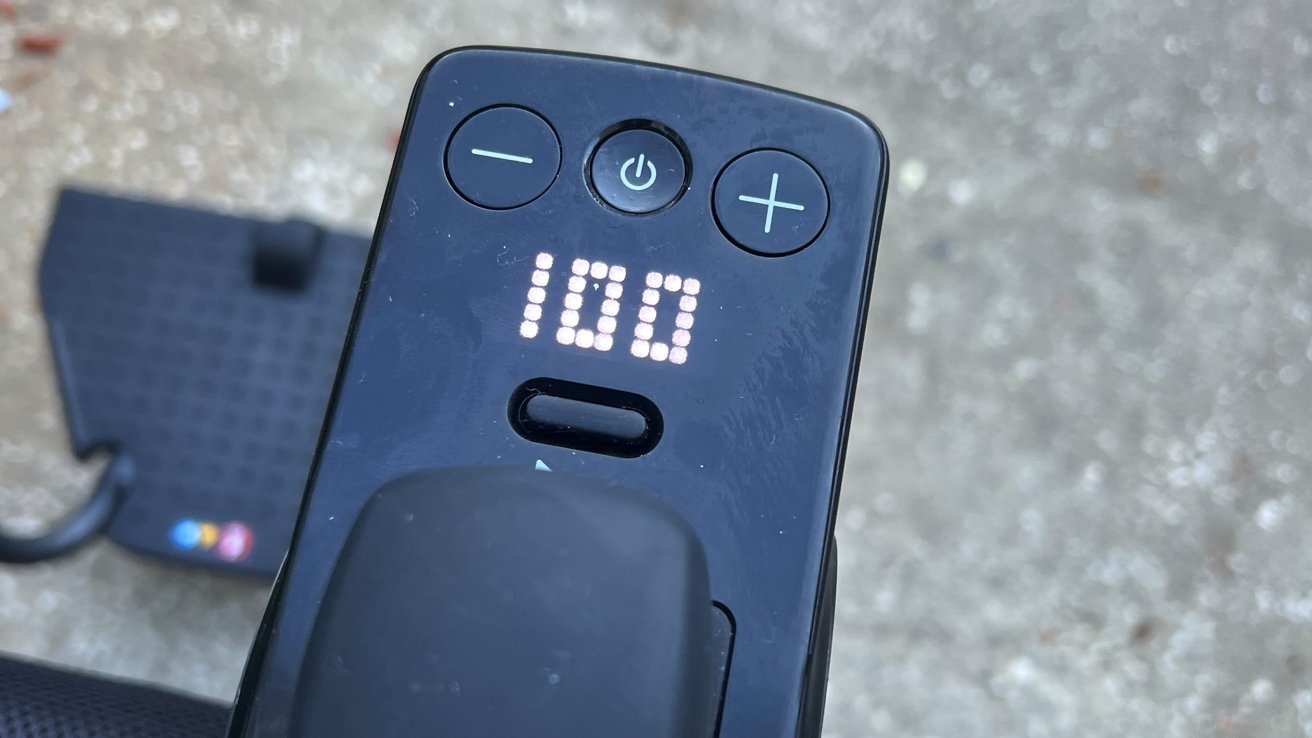
That said, with our travels and multiple charges, we haven't seen any notable decrease in battery capacity. The volume of the battery is a giant insulator against small pockets of damage dramatically cutting capacity, but things like heat are still a factor. We and the manufacturer both recommend keeping the temperature extremes in the battery to a minimum. So, don't leave it in a freezing car overnight, and limit the number of times you leave it in an incredibly hot car in the summer.
It can safely handle gentle inclines of up to 10 degrees and can also manage steps up to 1.3 inches in height. We managed a bit more than that, but at about 1.6 inches, the front wheels will deflect and not climb the stair unless you force them to. Small wheels on the back of the chair act as an anti-tipping assist — but they aren't perfect and won't stop a tip from a very steep angle.
The turning radius of 30.7 inches is very narrow versus other powered chairs we've tried. We're very very happy with the chair's maneuverability.
Like nearly every motorized wheelchair, it is rear-driven. It will pivot without forward motion because of the independent wheel drive, but like a boat, it's better and cleaner to have some forward motion to make those turns.
Whill's Remote Control app
While the Whiil Model F is primarily controlled by the user, there is also the option to manage the chair remotely from an iPhone.
The manufacturer's companion app, is free download from the App Store, and adds more control options for the chair to your iPhone.
There are configuration settings to adjust the chair's performance at impact to the battery. For example, Eco mode restrains the speed and responsiveness to preserve battery life, while Sport mode provides higher acceleration at a higher battery drain.
The app also provides an overview of the chair's movements, with an odometer, remaining battery level, and remaining range information available at a glance.
You can even use the app to control the chair itself. Using Bluetooth, the app brings up a digital version of the main control stick, which can be pushed in different directions like the real thing. We tested this, and it's reliable and quick at a range of about 50 feet.
The app allows the chair user to drive the chair over to where they are, if so desired. It opens up some other possibilities, also.
The Whill Model F is not well-suited to caretaker control without the remote. That said, in situations where the driver is having difficulty picking out a path because of the aforementioned vision cut, I've been able to assume control — with permission from the actual driver — and pilot our way out.
The chair comes with a barcode for connection to the app. Each device comes with a unique login and code, associated with a QR code. As the company suggests, do not stick the barcode sticker with this information to the chair itself.
Whill Model F - accessories and storage
There is an over-arm bag and under-slung hammock for storage on the chair. The rear of the chair has two projections which we've hung a bag off of.
We aren't fans of the over-arm bag. We understand why, but the pockets are a little too narrow for practicality. They'll do in a pinch to hold a phone and maybe some keys, but a water bottle is pretty much out of the question.
The bag that sits underneath the chair is much better. The clamps attach together with screws, but you could use zip ties or something to keep the clasps shut if you wanted something less permanent.
We use it to store the charger when we're out, and sometimes a large AC battery bank. When we're stopped, we'll siphon electricity off one of the many plugs that restaurants and the like have these days to support iPhone addiction, and charge about 10% in an hour while eating or resting. This gives us about an extra mile of travel.
If we know we're going to be someplace without an AC jack, we'll bring along a smaller backup battery in a backpack hung off the back of the chair to accomplish the same task. A second battery would work, too, in about the same volume and weight as the AC power bank, but at $550 for a second battery versus about $200 for a battery bank, this may not be an option for everybody.
There is a cane attachment bag for the chair, but we did not try it out. What we have done, though, is attach Command Strip cane brackets to a color panel, at the expense of a little width to the chair. Heavier canes will pop off the color panel, but our standard aluminum cane hangs on fine.
We promised road tests on indoor tile, wood, carpet, and the like. We do not recommend driving on loose gravel or loose dirt. It can make the trip, but as you may expect from a small-wheeled device, the transit isn't fabulous. Fortunately, Whill does make a chair for that kind of environment, but this is not that.
Carpet is fine, even shag. Wood is no problem, concrete and asphalt are obviously fine, and we even got a smooth ride on wet cobblestone.
So, in a pinch, hit that loose dirt. Don't be afraid of rain, but you shouldn't go mud-bogging either.
The Whill Model F is the travel wheelchair to get, if you have to
We don't want anybody to need to have the Whill Model F, and we also don't want you to have to get second-hand knowledge as a caretaker. We're glad it's available for folks that do or are, though.
About six months ago, we said that we knew it was good, and knew that it was a lifestyle device that would require some adapting. This is why we did the hands-on first, and waited on the review. And we've done that adapting.

We know what it can handle, where to drive it, and when not to. And, we've taken note of the people that have asked us about it.
We've had folks who know knee surgery is in their future. We've been interrupted by folks asking about it when we've easily hauled it out of the back of the car. The looks we've gotten when we've remote-piloted it from a parking spot are always, always followed up by questions about what it is, and where to get it.
And, these people we've spoken to universally complain about what they have or what they've shopped for. We've given them all the option to putter around in it a bit, and they love the responsiveness, and the battery is, frankly, a source of wonder given how light it is, versus the lead-acid that's in most of the competitors' that they've seen or own.
We're not fans of the arm-mounted bag, but that's surmountable, and the under-mounted bag is excellent. We don't like what we've seen from the cane bag that hangs off the chair, but there are options.
Out of the box, the Whill Model F isn't perfect. But, like any other assistive technology, it can get there with modification. What varies device to device, is how much work you need to do to get it to where you need it to be.
The Whill Model F starts off strong, and doesn't take much to get it to ideal for the designated driver.
Out of the box, the Whill Model F gets a...
Score: 4.5 out of 5
And, you, the user, can make it a 5 out of 5 with some custom modifications, relatively easily. If you need a powered wheelchair for inside or for regular outside use, it's hard to go wrong here, and it's easy to make enough changes to it, to make it your own.
Whill Model F pros
- Stylish
- Lithium-ion battery
- Light versus competitors
- Remotely driveable from the app
Whill Model F cons
- The arm-mounted bag isn't fabulous
- No real mechanism to manually push the chair in the case of a problem
Where to Buy the Whill Model F
The Whill Model F retails for about $3000, but prices vary by dealer and may or may not be covered in part or in full by insurance plans, which we leave as an exercise for the reader to determine. However, it has recently been listed on Amazon for about $2500 — which is worth a compare even if your insurance may pick up some of the price from a local vendor.